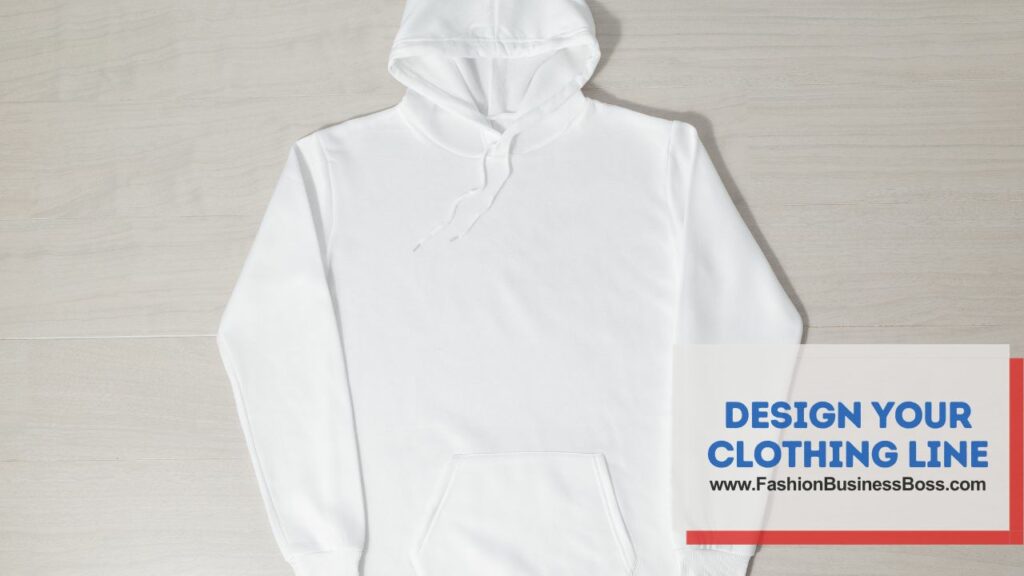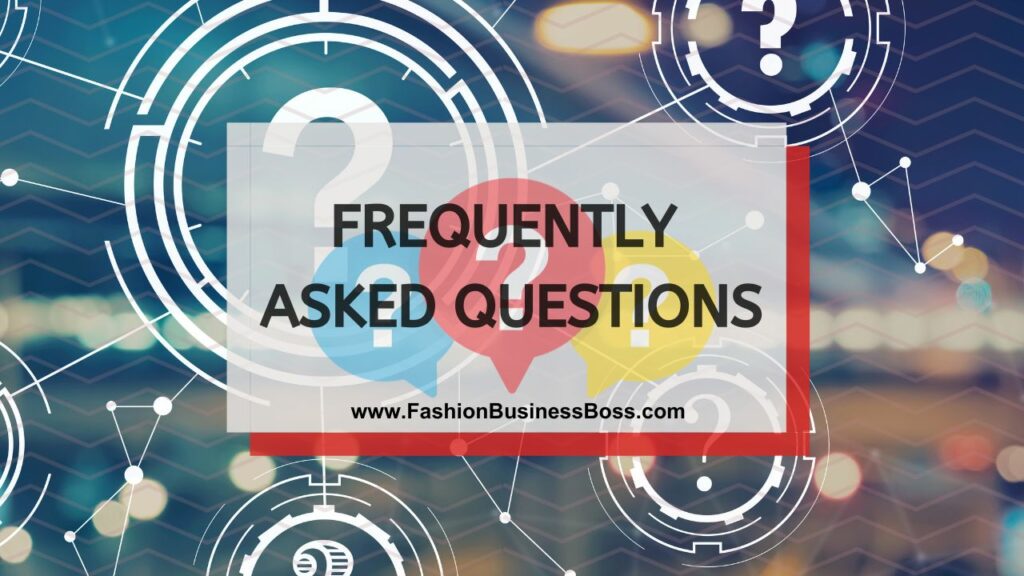Are you ready to take your passion for fashion to the next level and start your very own clothing brand? Creating a clothing brand is not just about designing stylish apparel; it’s a journey that involves careful planning, creativity, and a deep understanding of the fashion industry.
To kickstart your clothing brand, define your unique identity, research the market, create a solid business plan, and design quality apparel. Building a brand takes passion, strategy, and dedication.
In this article, we’ll walk you through the essential steps to turn your clothing brand dream into a reality.
Define Your Brand Identity

Defining your brand identity is the fundamental first step in starting a clothing brand. It involves crafting a clear vision that lays the foundation for your entire venture. To do this effectively, consider three essential aspects.
Firstly, understand your target audience. Determine who your ideal customers are, taking into account their preferences and needs. Knowing your audience inside out is vital as it will shape the products you create. Your designs should resonate with them and fulfill their specific requirements.
Secondly, establish your Unique Selling Proposition (USP). This is what distinguishes your clothing brand from the competition. Your USP should be a unique and compelling feature or aspect of your brand that grabs the attention of potential customers. It could be exceptional quality, ethical sourcing, or a particular style that sets you apart.
Lastly, carefully select your brand name and design a logo. These elements should be memorable and reflective of your brand’s identity. Ensure that your logo is visually appealing and aligns with the niche you’re targeting.
By defining your brand identity through understanding your audience, highlighting your USP, and creating a strong name and logo, you’ll lay a solid groundwork for your clothing brand startup.
Read more about: Where to Sell My Designer Clothes: Finding Your Market
Market Research
Market research is a critical aspect of starting a clothing brand. It’s about gathering essential information to make informed decisions. Here are the key components of effective market research:
Firstly, you should identify trends in the clothing industry. This means keeping an eye on what’s currently popular and what styles are in demand. It’s important to know what’s ‘in’ to tailor your designs accordingly.
Secondly, analyze your competitors. Study their products, pricing, and how they promote their brands. Understanding your competitors helps you identify gaps in the market and opportunities to stand out.
Lastly, determine the demand for your specific niche or style. Are people looking for what you plan to offer? Are there potential customers who resonate with your vision? This step helps ensure that there’s a market for your clothing brand.
By conducting thorough market research, you’ll gain valuable insights that will guide your decisions and increase your chances of making well-informed choices as you embark on your clothing brand startup journey.
Create a Business Plan
Creating a solid business plan is like building a sturdy framework for your clothing brand. Here’s what you need to include in it:
Firstly, focus on financial projections. Estimate how much money you’ll need to start and run your brand. Consider your startup costs, ongoing expenses, and forecast your revenue. These numbers are essential, especially if you require funding from investors or loans.
Secondly, outline your marketing strategy. Explain how you intend to promote your brand. This includes both online and offline marketing efforts. Consider social media, advertising, and any other methods that will help you reach your target audience effectively.
Lastly, don’t forget about your production and supply chain. Plan how you’ll source materials for your clothing and how you’ll produce the garments. If sustainability and ethical practices align with your brand’s values, be sure to incorporate them into your plan.
By including these elements in your business plan, you’ll have a clear roadmap for your clothing brand startup. It will guide your financial decisions, marketing efforts, and production processes, ensuring that you’re well-prepared to bring your brand to life.
Design Your Clothing Line

Designing your clothing line is where your creative vision takes center stage. Here’s how to approach this exciting phase:
Firstly, begin with sketches and prototypes. Your initial ideas need to be transformed into tangible designs. Create sketches to visualize your clothing and then build prototypes to give them physical form. Prototypes help you refine your designs.
Secondly, pay close attention to materials and quality. Choose materials that not only match your brand’s image but also meet high-quality standards. Quality is vital because it directly impacts customer satisfaction. Garments that feel and look good will attract and retain customers.
Lastly, consider size and fit. Ensure that your clothing fits well and is comfortable to wear. Offering a range of sizes is important to cater to different body types. A good fit enhances the overall experience for your customers.
By following these guidelines during the design phase, you’ll be on the right track to create a clothing line that’s not only visually appealing but also comfortable and of high quality, meeting the needs and preferences of your target audience.
Read more about: Wholesale Fashion Clothing Suppliers: Your Gateway to Affordable Style
Legal Considerations
Ensuring legal protection for your clothing brand is essential. Here’s a straightforward approach to address legal considerations:
Firstly, consider trademark registration. This involves safeguarding your brand name and logo. By registering them, you gain exclusive rights, preventing others from using them without your permission. This protects your brand’s identity and uniqueness.
Secondly, be aware of permits and licenses. Local regulations may require specific permits for your clothing business. It’s crucial to check these requirements and acquire any necessary permits to operate legally. Compliance with these regulations is vital to avoid potential legal issues down the road.
By taking these legal measures, you’ll establish a solid legal foundation for your clothing brand. It ensures that your brand identity is protected, and you operate within the boundaries of the law, providing a secure and legitimate environment for your business to thrive.
Build Your Online Presence
Establishing a robust online presence is vital in the digital era. Here’s a straightforward approach to building your online presence:
Firstly, create a user-friendly website. Your website serves as the digital storefront for your clothing brand. It should be visually appealing and easy to navigate. Showcase your products with high-quality images and provide a seamless online shopping experience for your customers.
Secondly, leverage social media platforms such as Instagram, Facebook, and Pinterest. These platforms offer a direct connection to your target audience. Regularly post engaging content, including images of your designs, behind-the-scenes glimpses, and fashion-related tips. Interact with your followers to build a loyal online community.
By following these steps, you’ll establish a strong online presence that helps you reach a broader audience, showcase your clothing line effectively, and engage with potential customers. This digital presence is a cornerstone of modern business, allowing you to connect with your audience and grow your clothing brand.
Launch Your Clothing Brand

Launching your clothing brand is an exciting milestone. Here’s a simple approach to introduce your brand to the world:
Firstly, think about hosting a launch event or a fashion show. These events help create buzz and excitement around your brand. Invite potential customers, fashion enthusiasts, and influencers to get a first look at your designs. This can generate valuable word-of-mouth promotion.
Secondly, ensure that your online store is fully prepared for customers. Make certain that your website is functional, easy to navigate, and equipped to process online orders securely. Provide clear product descriptions, pricing, and an intuitive checkout process to make the shopping experience seamless for your customers.
By executing these steps, you’ll launch your clothing brand and generate interest in your designs. A well-planned launch event and a user-friendly online store are crucial elements in introducing your brand to the world and attracting your initial customer base.
Read more about: Your Business Journey: Starting a Rental Clothing Company
Marketing and Promotion
Marketing and promotion are essential to raise awareness about your clothing brand. Here’s a straightforward approach to spread the word:
Firstly, consider content marketing. Starting a blog or creating engaging content related to your niche can help establish your brand as an authority in the fashion industry. Share valuable fashion tips, insights, and relevant information that resonates with your target audience. This content not only educates but also attracts potential customers.
Secondly, focus on social media marketing. Run targeted ad campaigns on platforms like Instagram, Facebook, and Twitter to reach your specific audience. Consistently engage with your followers by responding to comments and messages. Regular posts showcasing your designs and behind-the-scenes content can keep your audience engaged.
Lastly, explore collaborations. Partnering with influencers or other brands can expand your reach significantly. Influencers can help promote your clothing brand to their followers, while collaborations with complementary brands can introduce your products to new markets.
Customer Feedback and Adaptation
Listening to your customers and adapting to their needs is vital for the growth of your clothing brand. Here’s a straightforward approach:
Firstly, focus on product improvement. Continuously refine your designs based on the feedback and preferences of your customers. Pay attention to their comments and suggestions, and make necessary adjustments to enhance the quality and style of your clothing.
Secondly, prioritize exceptional customer service. Building a loyal customer base begins with providing excellent customer support. Be responsive to inquiries and concerns, and go the extra mile to address any issues promptly. Building trust and a positive reputation among your customers is crucial for long-term stability.
By valuing customer feedback and making necessary adaptations, you’ll strengthen your brand’s position in the market. It demonstrates that you care about your customers’ opinions and are committed to delivering products and services that meet their expectations. This customer-centric approach can lead to increased customer loyalty and word-of-mouth recommendations, which are invaluable for your clothing brand.
Scaling Your Brand

Scaling your clothing brand is a natural progression as it gains traction. Here’s a simple approach to consider:
Firstly, think about expanding your product line. Once you’ve established a strong foundation with your initial designs, explore adding new clothing items or collections. This can attract a broader customer base and keep your brand fresh and exciting.
Secondly, consider exploring new markets. Look beyond your current customer base and consider reaching out to different regions or demographics. Expanding into new markets can open up new opportunities for growth.
Lastly, as your brand expands, you may need additional help to manage the workload. Think about building a team to support various aspects of your business, such as production, marketing, and customer service. Having a dedicated team can help you handle the increased demands that come with growth.
Read more about: Your Clothing Business Budget: Setting the Stage for Growth
Conclusion
Launching a clothing brand is a challenging but fulfilling endeavor. With careful planning, dedication, and creativity, you can turn your dream into a thriving business. Remember that growth may not come overnight, but with perseverance and a commitment to quality, you can make your mark in the fashion industry.
Frequently Asked Questions

Q: What are the key steps to launching a clothing brand?
A: The key steps to launching a clothing brand include defining your brand identity, conducting market research, creating a business plan, designing your clothing line, and building a strong online presence.
Q: How important is market research for a clothing brand startup?
A: Market research is crucial for understanding your target audience, analyzing competitors, identifying trends, and assessing the demand for your niche or style. It helps in making informed decisions.
Q: What legal considerations should I be aware of when starting a clothing brand?
A: When starting a clothing brand, it’s important to consider trademark registration for your brand name and logo. You should be aware of local regulations and obtain necessary permits and licenses.
Q: How can I effectively promote my clothing brand?
A: Effective promotion involves content marketing, social media marketing, collaborations, and engaging with your audience. Creating a compelling online presence and showcasing your designs is key.
Q: What role does customer feedback play in the growth of a clothing brand?
A: Customer feedback is invaluable. It helps in product improvement, customer service enhancement, and building trust and loyalty. Listening to your customers can drive your brand’s growth.
To learn more about starting your own clothing business, check out my startup documents here.
The information provided by FashionBusinessBoss.com (“The Site”) is for general informational purposes only. All information on the Site is provided in good faith, however, we make no representation or warranty of any kind, express or implied, regarding the accuracy, adequacy, validity, reliability, availability or completeness of any information on the Site. Under no circumstance shall we have any liability to you for any loss or damage of any kind incurred as a result of the use of the Site or Reliance on any information provided on the Site. Your use of the Site and your reliance on any information on the Site is solely at your own risk. This blog post is for educational purposes only and does not constitute legal advice. Please consult a legal expert to address your specific needs. Terms and Conditions. (https://fashionbusinessboss.com/terms-and-conditions/)

Meet Shawn Chun: Entrepreneur and Fashion Business Fan.
I’m a happy individual who happens to be an entrepreneur. I have owned several types of businesses in my life from a coffee shop to an import and export business to an online review business plus a few more and now I create online resources for those interested in starting new ventures. It’s demanding work but I love it. I do it for those passionate about their business and their goals. That’s why when I meet a designer or boutique owner at a craft fair, farmers market, retail location or anywhere else I see myself. I know how hard the struggle is to retain clients, find good employees and keep the business growing all while trying to stay competitive.
That’s why I created Fashion Business Boss: I want to help fashion business owners like you build a thriving business that brings you endless joy and supports your ideal lifestyle.

